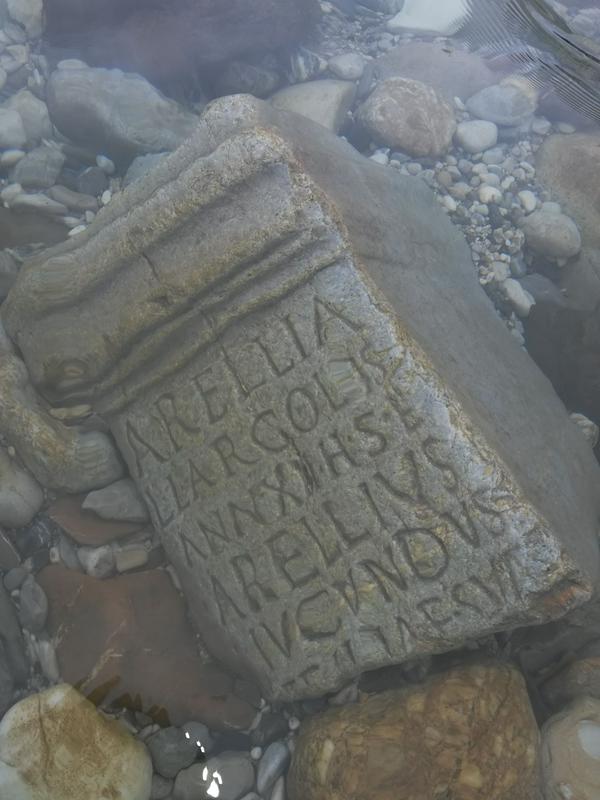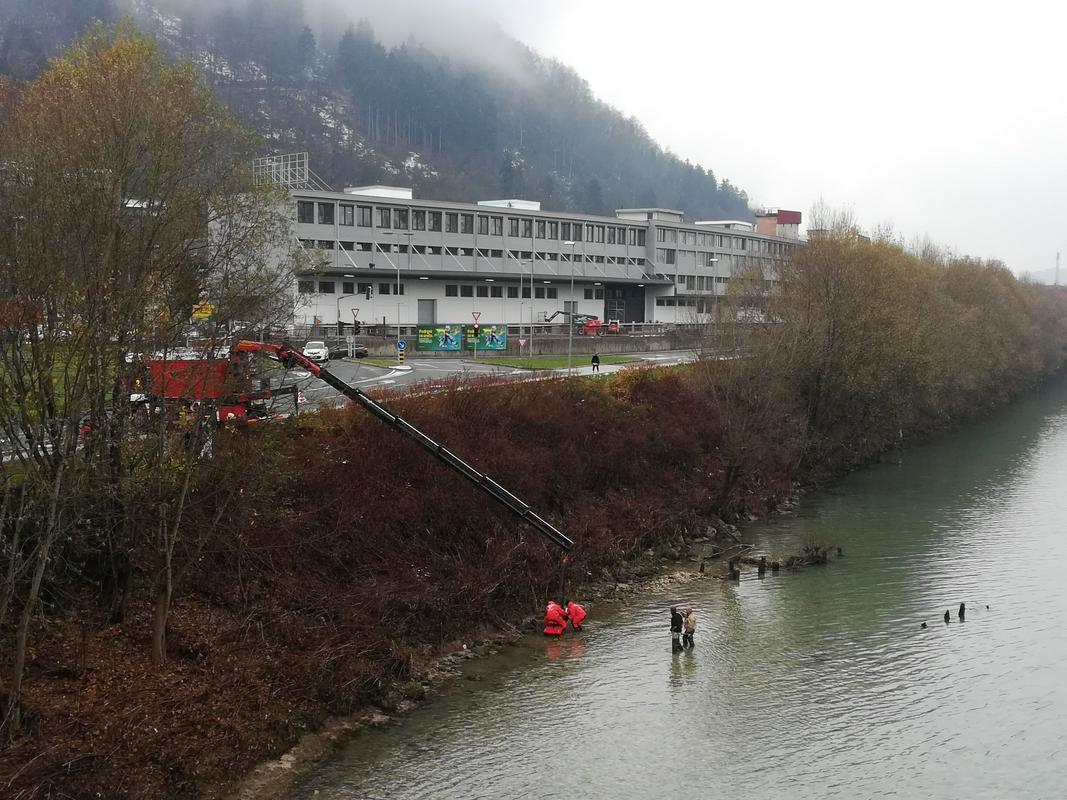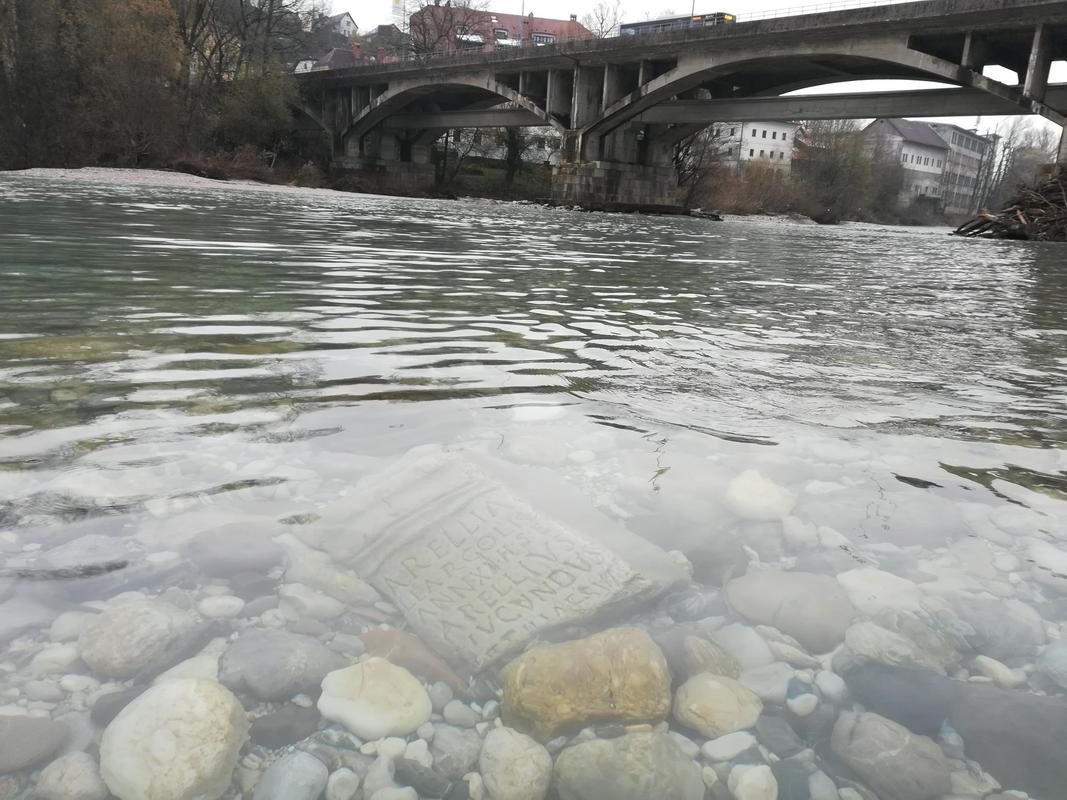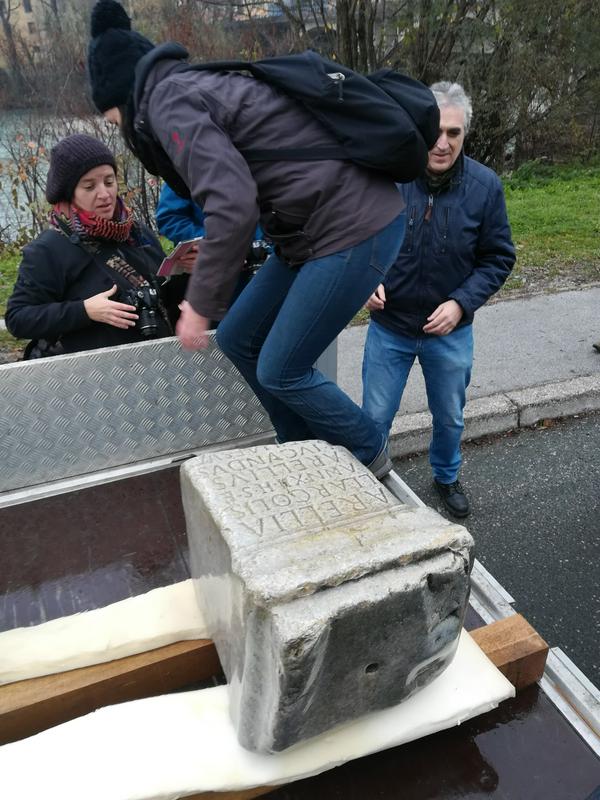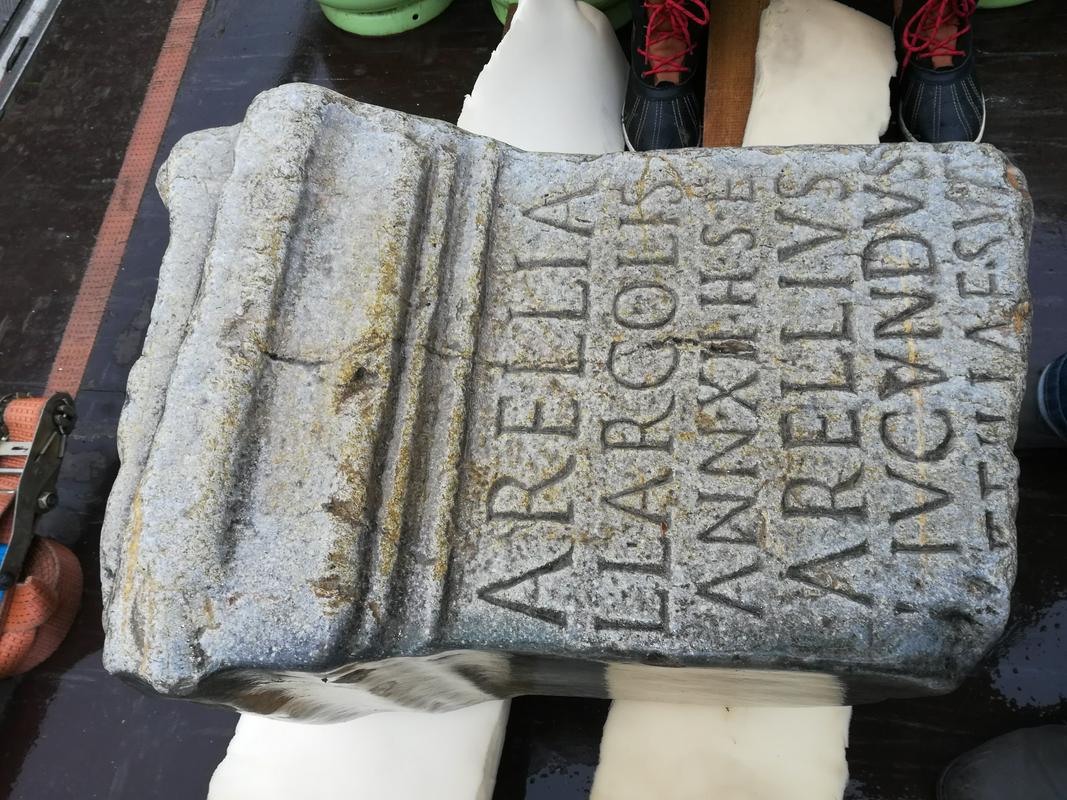
Fisherman Jure Meden noticed the unusual stone three days ago while fishing in the Sava River. He immediately notified the Institute for the Protection of Cultural Heritage, setting in motion a quick response and the memorial was pulled out of the water with the help of firefighters. So, instead of a fish, he caught a tombstone. "That's right, and probably the biggest fish in my life, weighing around 200 kg (laughter). But seriously, this place is known for fishing, I went there and all of sudden – if you're a fisherman, you know your river and notice if something is different – I noticed these Latin letters and writing. I was a little surprised," said Meden.
How the Roman tombstone ended up there is not yet known. According to Judita Lux from the Kranj office of the Institute for the Protection of Cultural Heritage, they still can't determine where precisely the tombstone came from. It most certainly dates back from the 1st or 2nd century, but the location still has to be confirmed.
Straight to the restoration centre
The river clearly carried the memorial slowly towards Kranj. High water levels started worrying experts and thus speeded up the process of pulling the memorial out from the water. "We decided to take it straight to the restoration centre, where it will be assessed in what kind of state it is," said Judita Lux.
According to initial findings, the memorial is well preserved and the inscription, even after so many centuries, is still very visible and reveals the fate of a 12-year-old girl. "Yes, this tombstone was erected by a father, Aerius Jucundus, for his 12-year-old daughter who was called Arellia Argolis," said Anja Ragolič from the Institute of Archaeology. Experts will reveal more information after examining the memorial in detail.




















































